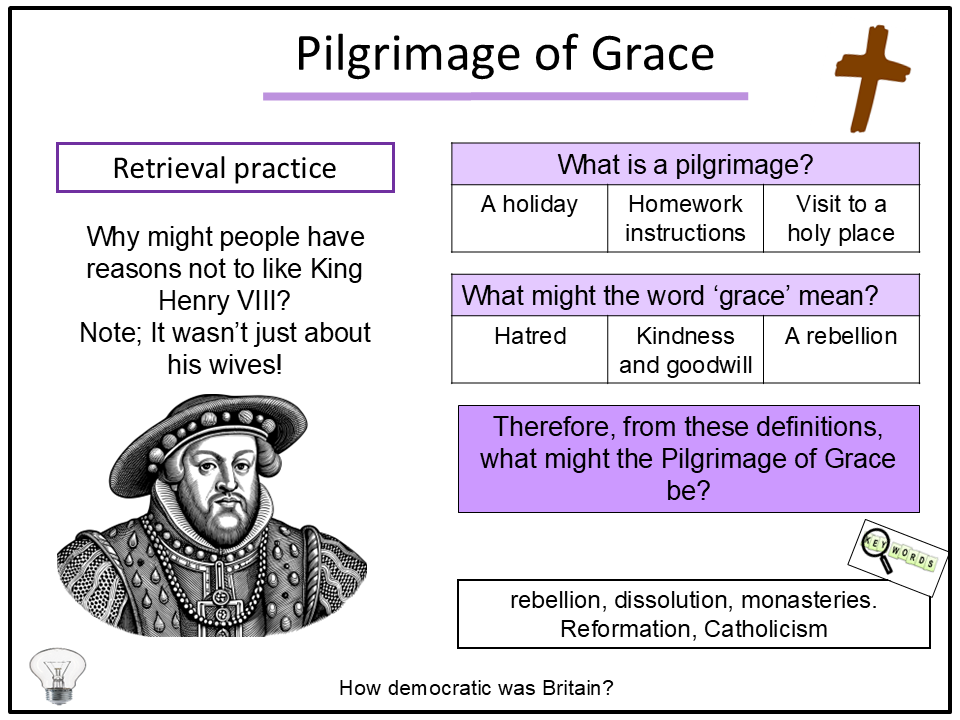


Engage, challenge and inspire your Key Stage 3 students with this high-quality, fully resourced lesson exploring one of the most significant uprisings of Tudor England.
This lesson has a clear focus on historical enquiry skills and critical thinking and is perfect for non-specialists and experienced historians alike!
What’s included?
A clear explanation of the Dissolution of the Monasteries and the religious, social and economic reasons behind it.
A visual analysis of the 5 Wounds of Christ banner, helping students unpack symbolism and religious motivation.
The key events of the rebellion presented through an engaging timeline and chronological task
A source analysis activity where students evaluate contemporary sources to explore motives, bias and reliability.
A ‘big picture’ significance task in which students prioritise reasons why the rebellion mattered, from local protest to national crisis.
Why teachers will love this resource
The lesson covers key skills of cause and consequence, source inference and utility, significance and prioritisation, historical empathy and communication
This lesson is ready to use and easily adaptable.
It will help your students make sense of faith, fear and rebellion in Tudor England,
Whether you’re teaching the Tudors as part of a thematic unit or delving into political resistance and religion, it is perfect for Key Stage 3 students of all abilities.
Something went wrong, please try again later.
This resource hasn't been reviewed yet
To ensure quality for our reviews, only customers who have purchased this resource can review it
to let us know if it violates our terms and conditions.
Our customer service team will review your report and will be in touch.